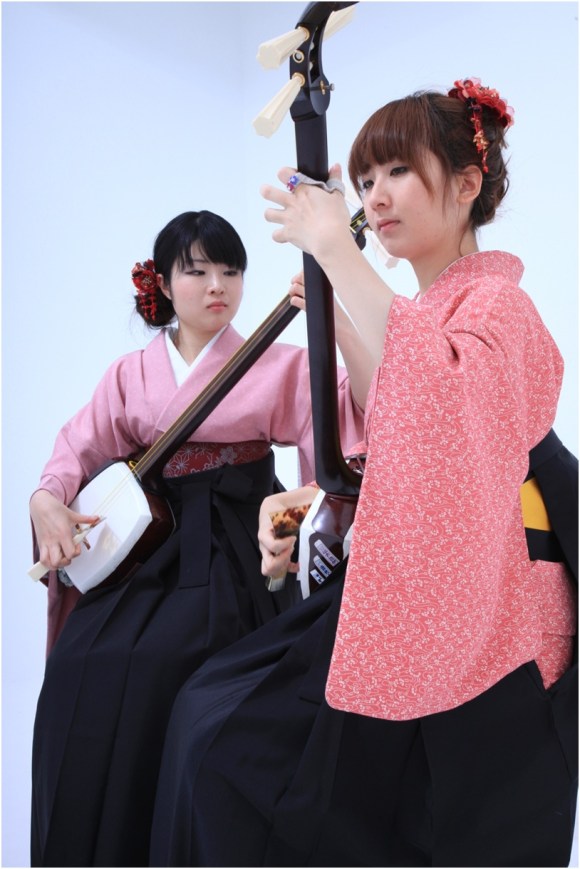
The world of traditional Japanese music is incredibly varied–there’s exciting min’you folk music, austere gagaku ancient imperial court music, and the ethereal tunes of Noh plays. But one genre in particular stands out among the all others: tsugaru-jamisen.
A fast, lively style of playing born out of min’you as performed by traveling entertainers, tsugaru-jamisen hails from Aomori Prefecture and is the youngest genre of “traditional” Japanese music. And, from Hiromitsu Agatsuma and the late Takahashi Chikuzan to the Yoshida Brothers and Kevin Kmetz, there is no shortage of talented, inspiring performers in the tsugaru-jamisen world.
But for us, one duo in particular stands out: Ki&Ki.
Even if you don’t recognize the name, you may already be familiar with these two incredibly talented young women thanks to their numerous YouTube videos. Recently we got the chance to sit down with the pair to learn a little bit about their history with tsugaru-jamisen.
The tsugaru-jamisen duo consists of Kanami Takeda (above, left), 24 years old, and Hikari Shirafuji (right), 23 years old. Though they’re both still in their early 20s, they have nearly two and a half decades of playing experience between them: Hikari started when she was only nine, thanks to her grandmother, and Kanami picked up the instrument when she was 14 after being amazed by a guest performance at her school. While the shamisen is generally seen as being an instrument for older people, these two took an instant liking to it and haven’t stopped playing since–though Hikari did mention that she kept her playing to herself in high school to avoid being teased by her classmates.
▼She’s definitely not hiding it any more!
First, we wanted to know how Ki&Ki came to be.
It turns out that Kanami is from Aichi Prefecture, about half way between Tokyo and Osaka, and Hikari is from Hyogo Prefecture—on the opposite side of Osaka. It’s quite a distance, so we wondered how in the world they met.
Through national tsugaru-jamisen competitions, of course!
While tsugaru-jamisen is still not a major instrument in Japan, there are a number of national competitions every year, which are divided by age group and gender. Both of the women regularly attended—and placed very highly—in these competitions from a young age, becaming “competition friends.” When they both moved to Tokyo for university in 2008, they took the opportunity to form their own group.
▼Kanami sings a traditional song as Hikari accompanies her on shamisen.
What’s with their name?
Written in Japanese as 輝&輝, the group’s name is pronounced “ki ki.” The kanji 輝, which can be read as “teru,” “ki,” or “kagayaku,” means “to shine,” the perfect word to describe their fast, energetic music. When asked why they chose the name, Hikari explained that as they come from very different places and obviously had different teachers, their playing styles really aren’t similar at all. Kanami added that there are different “colors” to how they play their instruments, so when their two styles are combined, it creates an altogether newer, brighter style!
So what do they sound like?
For those of you who are already familiar with tsugaru-jamisen, their music may not always be exactly what you’re expecting. While they do play many traditional songs—always a crowd-pleaser—they write and perform original songs as well, though they manage to imbue every note with the tsugaru-jamisen spirit.
On the other hand, if you are new to the shamisen, you’re probably wondering what it sounds like in general. When asked how to describe their instruments to someone who’d never heard a shamisen before, they replied that it was like “a Japanese banjo!”
Still, some things simply need to be seen (and heard) to be understood, so here’s a video of some of the highlights from the show we caught last weekend. Bet you wish you had been there!
What is “tsugaru-jamisen”?
The tsugaru-jamisen is quite different to the average shamisen in shape and in how it’s played–being noticeably larger and louder. The extra size makes the instruments sturdier, which in turn allows performers to play more aggressively. Like Takahashi Chikuzan, who helped popularize the style after World War II, tsugaru-jamisen players “attack” the strings with their bachi–a wide-headed plectrum which looks oddly similar to a paint scraper. Thanks to the instrument’s natural reverb and the percussive playing, many compare tsugaru-jamisen to rock music–or even heavy metal.
▼The crowd listens carefully as the young women fly through a song.
When asked how their original songs differ from traditional tsugaru-jamisen songs, they explained that they like to use western rhythms with a “tsugaru-jamisen heart.” Our favorite original song is “Teruteru,” a swinging number with a tongue-in-cheek name: much to the chagrin of Ki&Ki, many people mispronounce their name as “Teru Teru.” A sense of humor is important, right? “Besides,” they told us, “it still sounds cute!”
▼Taking a moment to have a laugh with the audience.
In addition to their original songs and the more traditional tsugaru-jamisen songs, they also play a number of cover songs reworked for their instruments, like the legendary “The Path of the Wind” from My Neighbor Totoro. This combination of musical stylings perfectly typifies the group, capturing both their youthful spirit and their dedication to traditional music.
Where can you see them?
We mentioned before that you may have noticed their videos on YouTube—they have dozens showcasing performances in places all over Tokyo–from Ueno Park to various national competitions to a moving train. The pair keeps very busy, playing multiple times a week, often with Heaven Artist, an organization that provides permits and locations for street performers. They keep an updated list of their future performances on their website, which can be found here. Unfortunately, it’s Japanese only–but maybe we can talk them into posting an English version as well!
This is their sixth year performing as Ki&Ki, but what’s next?
“To perform and get famous!” they laughed before adding that they’re trying to help tsugaru-jamisen grow. The pair is especially keen on fostering interest in the music among young people—hence their wide variety of songs. By combining traditional music with contemporary, they hope they’ll be able to attract a wider audience.
They also mentioned a special event/performance on September 8 with a slew of guest artists contributing to the show. Called “Yuenchi,” or amusement park, their goal is not merely to entertain the audience–they also want to get the audience involved. As tsugaru-jamisen music is fundamentally “folk music” developed by buskers, there’s lots of clapping, shouting, and singing for the more enthusiastic audience members.
▼The shamisen often requires retuning while playing!
Okay, by now, you’re probably ready to hear some more of this amazing music, right?
Here’s their music video for the food-themed song “Motsunabe.”
We hope you enjoy Ki&Ki’s music as much as we do! If you’re interested in hearing more, you can check out videos on their website or on YouTube. They also have CDs available, which can be ordered online. Fortunately, the form is in English and, yes, they ship internationally!
Finally, if you are going to be in Tokyo in September, you’ll surely want to attend their Yuenchi event. Tickets are available online (Japanese only), as well as at their shows or at the door on the day of the concert if not sold out.
Event name: Yuenchi
Performers: Ki&Ki, Sachie Asano (Tsugaru dance), Kazuki Arai (bass), Kayoko Tsujita (percussion), Aki Ikehara (saxophone), +ism (salaryman dance/performance)
Date: September 8, 2013
Time: Doors 4:30, Start 5:00
Tickets: 3,000 yen (about US$30)
Location: Nogatakumin Hall
Address: Tokyo, Nakano, Nogata 5-3-1
Finally, if you’re interested in learning more about tsugaru-jamisen, the pair recommended Bachido, a web-based community where you can learn more about the history of tsugaru-jamisen and find free music lessons.
All images by RocketNews24, except featured photo by Ki&Ki.




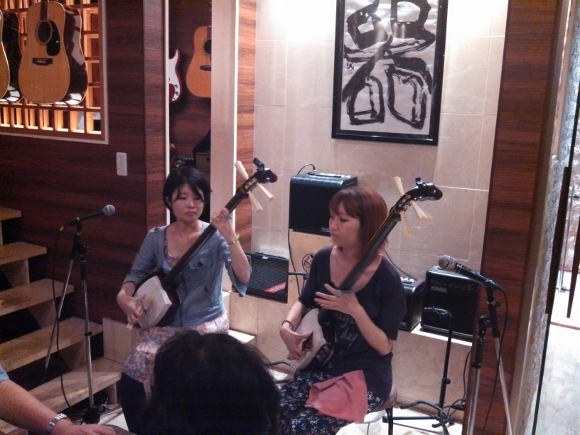
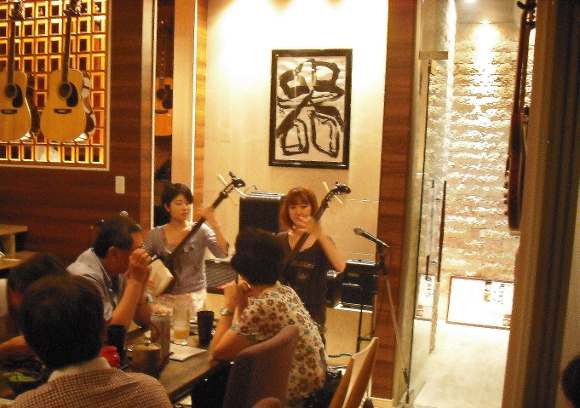
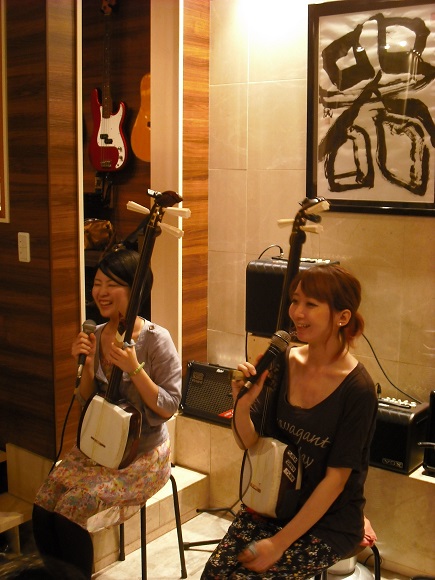

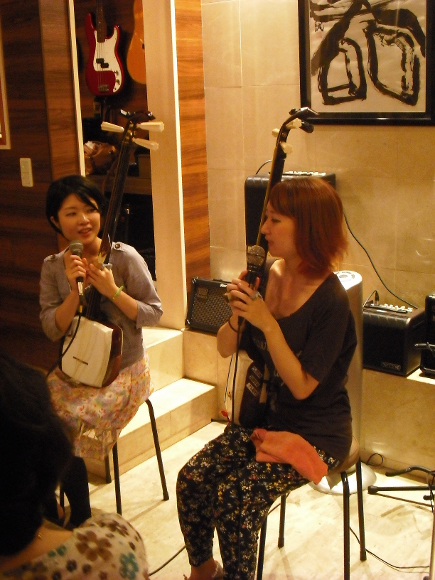
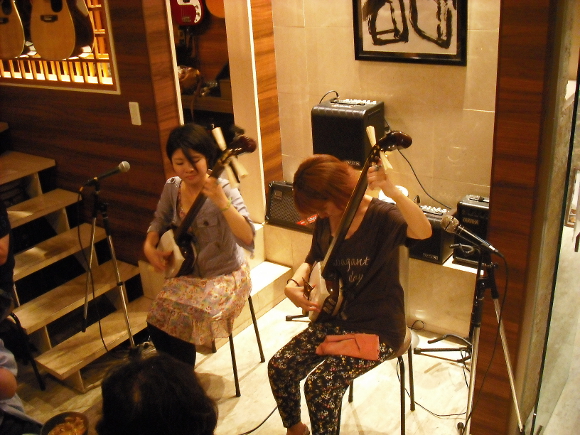
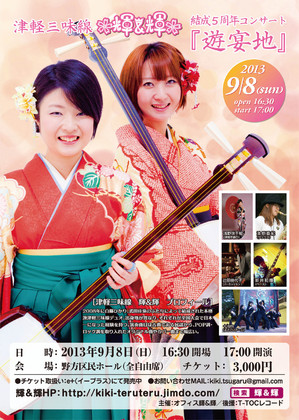
 Watch over 20 drones dance in unison with a trio of shamisen players in front of Fuji【Video】
Watch over 20 drones dance in unison with a trio of shamisen players in front of Fuji【Video】 Famikoto celebrates Nintendo with medley of game music played on traditional instruments【J-Tunes】
Famikoto celebrates Nintendo with medley of game music played on traditional instruments【J-Tunes】 Six of our favorite songs performed on traditional Japanese instruments to get you to the weekend
Six of our favorite songs performed on traditional Japanese instruments to get you to the weekend BABYMETAL invasion of the West marches on, everyone welcomes new kawaii overlords【VIDEOS】
BABYMETAL invasion of the West marches on, everyone welcomes new kawaii overlords【VIDEOS】 Michael Jackson’s “Smooth Criminal” played on Japanese instruments? Yes, please!【Video】
Michael Jackson’s “Smooth Criminal” played on Japanese instruments? Yes, please!【Video】 Foreigner’s request for help in Tokyo makes us sad for the state of society
Foreigner’s request for help in Tokyo makes us sad for the state of society Seaside scenery, history, and so many desserts on Yokohama’s Akai Kutsu【Japan Loop Buses】
Seaside scenery, history, and so many desserts on Yokohama’s Akai Kutsu【Japan Loop Buses】 Japanese city loses residents’ personal data, which was on paper being transported on a windy day
Japanese city loses residents’ personal data, which was on paper being transported on a windy day Should you add tartar sauce to Japanese curry rice? CoCo Ichi makes diners an unusual offer
Should you add tartar sauce to Japanese curry rice? CoCo Ichi makes diners an unusual offer Ghibli Park now selling “Grilled Frogs” from food cart in Valley of Witches
Ghibli Park now selling “Grilled Frogs” from food cart in Valley of Witches Red light district sushi restaurant in Tokyo shows us just how wrong we were about it
Red light district sushi restaurant in Tokyo shows us just how wrong we were about it Mt. Koya planning to instate visitor’s tax to cope with huge tourist numbers
Mt. Koya planning to instate visitor’s tax to cope with huge tourist numbers Harajuku Station’s beautiful old wooden building is set to return, with a new complex around it
Harajuku Station’s beautiful old wooden building is set to return, with a new complex around it Smash Bros. director Sakurai stabs Kirby in the face, has delicious justification for it
Smash Bros. director Sakurai stabs Kirby in the face, has delicious justification for it Starbucks Japan releases new mugs and gifts for Mother’s Day
Starbucks Japan releases new mugs and gifts for Mother’s Day McDonald’s new Happy Meals offer up cute and practical Sanrio lifestyle goods
McDonald’s new Happy Meals offer up cute and practical Sanrio lifestyle goods Japanese ramen restaurants under pressure from new yen banknotes
Japanese ramen restaurants under pressure from new yen banknotes French Fries Bread in Tokyo’s Shibuya becomes a hit on social media
French Fries Bread in Tokyo’s Shibuya becomes a hit on social media Studio Ghibli releases new action figures featuring Nausicaä of the Valley of the Wind characters
Studio Ghibli releases new action figures featuring Nausicaä of the Valley of the Wind characters New private rooms on Tokaido Shinkansen change the way we travel from Tokyo to Kyoto
New private rooms on Tokaido Shinkansen change the way we travel from Tokyo to Kyoto Tokyo Tsukiji fish market site to be redeveloped with 50,000-seat stadium, hotel, shopping center
Tokyo Tsukiji fish market site to be redeveloped with 50,000-seat stadium, hotel, shopping center Beautiful Ghibli sealing wax kits let you create accessories and elegant letter decorations【Pics】
Beautiful Ghibli sealing wax kits let you create accessories and elegant letter decorations【Pics】 Studio Ghibli releases Kiki’s Delivery Service chocolate cake pouches in Japan
Studio Ghibli releases Kiki’s Delivery Service chocolate cake pouches in Japan New definition of “Japanese whiskey” goes into effect to prevent fakes from fooling overseas buyers
New definition of “Japanese whiskey” goes into effect to prevent fakes from fooling overseas buyers Our Japanese reporter visits Costco in the U.S., finds super American and very Japanese things
Our Japanese reporter visits Costco in the U.S., finds super American and very Japanese things All-you-can-drink Starbucks and amazing views part of Tokyo’s new 170 meter-high sky lounge
All-you-can-drink Starbucks and amazing views part of Tokyo’s new 170 meter-high sky lounge More foreign tourists than ever before in history visited Japan last month
More foreign tourists than ever before in history visited Japan last month New Pokémon cakes let you eat your way through Pikachu and all the Eevee evolutions
New Pokémon cakes let you eat your way through Pikachu and all the Eevee evolutions Disney princesses get official manga makeovers for Manga Princess Cafe opening in Tokyo
Disney princesses get official manga makeovers for Manga Princess Cafe opening in Tokyo Sales of Japan’s most convenient train ticket/shopping payment cards suspended indefinitely
Sales of Japan’s most convenient train ticket/shopping payment cards suspended indefinitely Sold-out Studio Ghibli desktop humidifiers are back so Totoro can help you through the dry season
Sold-out Studio Ghibli desktop humidifiers are back so Totoro can help you through the dry season Japanese government to make first change to romanization spelling rules since the 1950s
Japanese government to make first change to romanization spelling rules since the 1950s Ghibli founders Toshio Suzuki and Hayao Miyazaki contribute to Japanese whisky Totoro label design
Ghibli founders Toshio Suzuki and Hayao Miyazaki contribute to Japanese whisky Totoro label design Doraemon found buried at sea as scene from 1993 anime becomes real life【Photos】
Doraemon found buried at sea as scene from 1993 anime becomes real life【Photos】 Tokyo’s most famous Starbucks is closed
Tokyo’s most famous Starbucks is closed One Piece characters’ nationalities revealed, but fans have mixed opinions
One Piece characters’ nationalities revealed, but fans have mixed opinions We asked a Uniqlo employee what four things we should buy and their suggestions didn’t disappoint
We asked a Uniqlo employee what four things we should buy and their suggestions didn’t disappoint Princesses, fruits, and blacksmiths: Study reveals the 30 most unusual family names in Japan
Princesses, fruits, and blacksmiths: Study reveals the 30 most unusual family names in Japan Wagakki Band’s newest video “Strong Fate” might just be the most epic one yet!
Wagakki Band’s newest video “Strong Fate” might just be the most epic one yet! Final Fantasy fans around the world share musical creations with Home de Chocobo challenge【Video】
Final Fantasy fans around the world share musical creations with Home de Chocobo challenge【Video】 No-Face has apparently moved to Aomori and taken up playing tsugaru-jamisen on the street
No-Face has apparently moved to Aomori and taken up playing tsugaru-jamisen on the street Sonus Antiquitatum, Sonata for Two Game Boys in F Minor: Chiptunes for the sophisticate
Sonus Antiquitatum, Sonata for Two Game Boys in F Minor: Chiptunes for the sophisticate It’s a hard rock life: NINGEN ISU’s Shinji Wajima talks about songwriting, working with friends
It’s a hard rock life: NINGEN ISU’s Shinji Wajima talks about songwriting, working with friends BABYMETAL releases full album, metalheads and idol fans headbang in unison
BABYMETAL releases full album, metalheads and idol fans headbang in unison Japanese comedian uses traditional Japanese court instrument to play…the McDonald’s fryer alarm?
Japanese comedian uses traditional Japanese court instrument to play…the McDonald’s fryer alarm? Legendary DJ Krush performs with traditional Japanese musicians to create music for your dreams
Legendary DJ Krush performs with traditional Japanese musicians to create music for your dreams Studio Ghibli’s No-Face appears again on the streets of Japan to rock out on his shamisen 【Video】
Studio Ghibli’s No-Face appears again on the streets of Japan to rock out on his shamisen 【Video】 This Do Re Mi Day, remember to give your child the gift of perfect pitch
This Do Re Mi Day, remember to give your child the gift of perfect pitch Turns out classical music sounds like an epic RPG boss battle by adding a drum beat 【Video】
Turns out classical music sounds like an epic RPG boss battle by adding a drum beat 【Video】 J-Pop singer to perform song written and composed by the emperor and empress at upcoming ceremony
J-Pop singer to perform song written and composed by the emperor and empress at upcoming ceremony Math, art, and music: Sputniko! reimagines J-pop【J-Tunes】
Math, art, and music: Sputniko! reimagines J-pop【J-Tunes】 If you’re good at rhythm games, you might also be an expert at petting cats【Video】
If you’re good at rhythm games, you might also be an expert at petting cats【Video】 Here’s why Japanese supermarkets play “cheap” background music all day, according to Twitter
Here’s why Japanese supermarkets play “cheap” background music all day, according to Twitter Japanese musician uses female pubic hair to produce unprecedented sound in new song【Video】
Japanese musician uses female pubic hair to produce unprecedented sound in new song【Video】
Leave a Reply